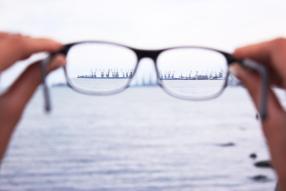
What is Nearsightedness?
Nearsightedness, myopia, is the most common cause of vision problem in people under the age of 40. The number of people with nearsightedness continues to grow. Just a few decades ago, the number of Americans with myopia was about 25%. Today, over 40% of Americans are nearsighted. In fact, it is projected globally that 50% of the world’s population will be myopic by 2050.
Signs and Symptoms of Myopia
Children who are nearsighted often struggle to see things on the board at school or are unable to see things like a clock or television clearly. Adults, typically struggle seeing road signs or recognizing faces across a room. Individuals may squint to see these distant objects. However, these people will be able to see well for near tasks such as reading and working on a computer.
What Causes Myopia?
Myopia develops when the eye is too long in relation to the focusing power of the cornea and lens of the eye. As a result, light rays come to a focus point in front of the retina rather than on the retinal surface.

Myopia typically develops in childhood. If a child’s parents are nearsighted, there is a higher risk of the child being nearsighted as well. In most cases, nearsightedness tends to stabilize in early adulthood.
Treatment Options
Nearsightedness can be treated with glasses, contact lenses and surgical procedures such as LASIK. Glasses are typically the first treatment option. As a child approaches the late elementary and middle school years, contact lenses are a great option in addition to glasses. When a person reaches early adulthood and their prescription stabilizes, refractive surgeries like LASIK can be discussed to reduce or eliminate the need for glasses or contacts.
If you have any questions regarding the correction of your nearsightedness or other eye condition, call Summit Eye Center at (816) 246-2111 or email us at